Tag Archives:cooking
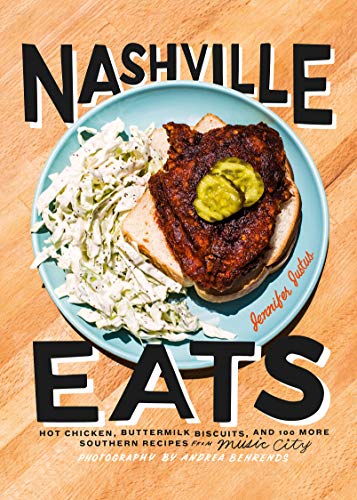
14
MayOde to Hot Chicken
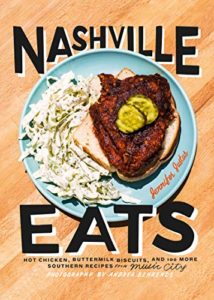 Warning: if you’re hungry or in danger of becoming hungry, proceed with caution.
Warning: if you’re hungry or in danger of becoming hungry, proceed with caution.
If you’ve visited a restaurant or ordered out in the past year, you may have noticed an item appearing on menus around the Northeast called “Nashville hot chicken.” What’s this? How is it different from regular spicy chicken, or buffalo sauce? Doesn’t this restaurant know we’re nowhere near Nashville?
Readers, friends, foodies: believe the hype. I had the great privilege of attending the Public Library Association Conference in Nashville, TN in February 2020 and have experienced firsthand the glory that is Nashville hot chicken… in fact I experienced it several times in several days. While I haven’t found a New England restaurant serving Nashville hot chicken that quite lives up to the real deal, I will keep hunting through local menus and sampling new versions because the real McCoy is just that good. If not life-changing, it was at least palette-changing.
My coworkers and I arrived in Nashville and did what any hungry traveler would do – ask the Lyft driver where they like to eat and what iconic dish they recommend we have to try before leaving Nashville. Time and again the answer we received was Nashville hot chicken, and everyone we asked had their own local spot they claimed made the best spicy bird in town. Realize that at this point in my life, I didn’t really care for fried chicken – at all. While I liked spicy foods, I could barely stand to eat a chicken wing. I shrugged, thinking I might as well try it as long as I’m here, and as long as everyone else was trying it…
We made our way to Hattie B’s Hot Chicken Restaurant, a Nashville-based chain that specializes in hot chicken and one of the major purveyors of the dish. Full disclosure, when it comes to hot chicken, I’m in the Hattie B’s camp. According to the book Nashville Eats by Jennifer Justus, the original hot chicken was created by Prince’s Hot Chicken Shack in the 1930s, and this local chain is still very much thriving today.
Enough suspense – what is it like to eat hot chicken? The chicken is served atop a slice of thick white bread, garnished with bright green dill pickle slices, and ideally accompanied by southern food sides of your choice such as collard greens, black-eyed pea salad, or cornbread. The chicken could be a mix of wings, leg, or breast, and arrives piping hot and rusty red-orange in color. Breaded and coated with spices, the chicken should glisten with just a bit of sauce from the skillet. A fork and knife are required for this meal, and cutting into the hot chicken releases a steamy aroma of spices.
Hot chicken can be ordered mild, hot, or extra hot, with extra hot being recommended for only true lovers of spicy cuisine. With a crispy crunchy outside and a moist juicy inside, the dish is so much more than spicy heat, however. Hattie B’s executive chef, John Lassater, shared in The Southerner’s Cookbook that the spice blends for hot chicken are typically closely-guarded secrets but that cayenne pepper, onion powder, and garlic feature heavily in the flavor profile. My own impression was that a depth of herbal flavor supported the spicy heat of the bird, and the moistness of the meat was not just grease from the frying process. As Lassater points out, brining the poultry in buttermilk and vinegar is a vital step, and sets the recipe apart; that recipe can be found in The Southerner’s Cookbook, by the way.
You don’t have to enjoy spicy food to appreciate that southern chefs are champions at making fried chicken. Rebecca Lang wrote an entire cookbook with variations on the cuisine called Fried Chicken: Recipes for the Crispy, Crunchy Comfort-Food Classic. Lang breaks fried chicken into three different categories: skillet fried, deep fried, and combination fried. While Lang classifies Tennessee Hot Chicken (clearly with a nod to Nashville) as a deep fried variety, but others contend that hot chicken should be skillet fried. Lang also takes the time to describe at-home chicken frying in detail, as does Edward Lee in Smoke & Pickles, so that home chefs can tackle the frying process with guidance.
Want to try making Nashville hot chicken at home but skip some of the calories? While the genuine article is beyond delicious, I concede that it is most definitely not healthy. One of the library’s ebook lending services, Hoopla, has an ebook called Air Fry Genius by Meredith Laurence. The book has a recipe for Nashville hot chicken. While I’ve never tasted hot chicken from an air fryer, if you have one of these appliances then the recipe is worth a try.
If your appetite for southern cooking has been whetted you might want to check out these or other southern cuisine cookbooks from our collection, such as Back Home with the Neelys, Southern Plate, or volume one or two of Magnolia Table by Joanna Gaines. If I haven’t piqued your curiosity about Nashville hot chicken yet, then take a note from the author of Nashville Eats, “In a city of stars, Nashville’s hot chicken burns brightly… And more than just a heat thing, hot chicken stays with you. It can alter a person’s state of being, drawing him back for more.”
Liz Reed is the Adult and Information Services Department Head at the Morrill Memorial Library in Norwood, MA. Look for her article in the May 13, 2021 issue of the Transcript and Bulletin.
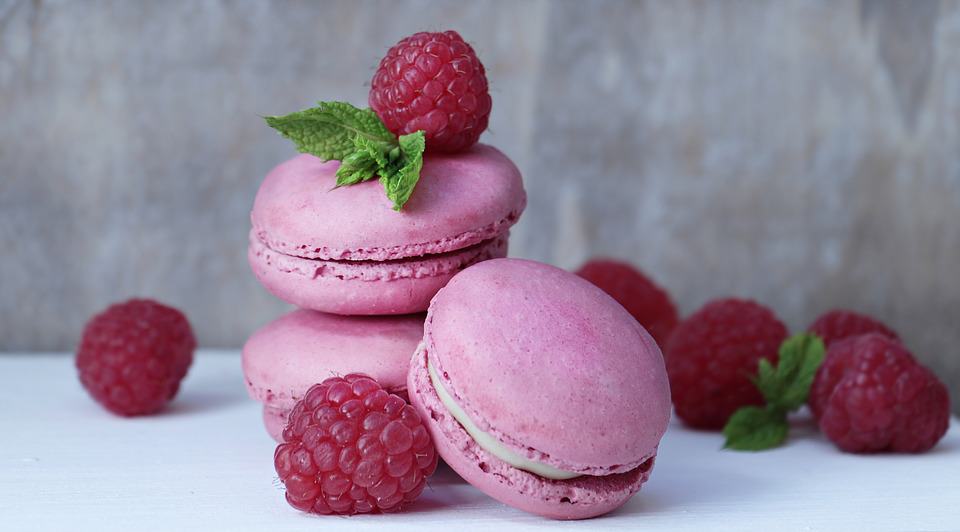
1
NovOn Your Marks, Get Set… Bake!
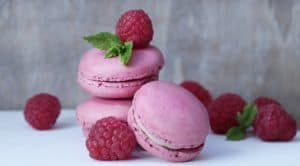 Or as the Brits say, “bike.” And we’re not talking cycling. I just finished drooling over the first four seasons of the Great British Baking Show, for the second time, and can’t wait for Season 5. My latest TV addiction, GBBS, is thoroughly entertaining without being treacly. Judges Mary Berry and Paul Hollywood preside over brigades of British bakers who go “dough to dough” over the course of ten weeks to try to bring home the blue ribbon. Once I tuned in, it was love at first bite. In an enormous white tent set in the English countryside, 12 amateur bakers chosen from thousands compete in three weekly challenges- the signature bake, the technical, and the showstopper. With one unlucky soul voted off each week, it’s like Survivor but with spatulas.
Or as the Brits say, “bike.” And we’re not talking cycling. I just finished drooling over the first four seasons of the Great British Baking Show, for the second time, and can’t wait for Season 5. My latest TV addiction, GBBS, is thoroughly entertaining without being treacly. Judges Mary Berry and Paul Hollywood preside over brigades of British bakers who go “dough to dough” over the course of ten weeks to try to bring home the blue ribbon. Once I tuned in, it was love at first bite. In an enormous white tent set in the English countryside, 12 amateur bakers chosen from thousands compete in three weekly challenges- the signature bake, the technical, and the showstopper. With one unlucky soul voted off each week, it’s like Survivor but with spatulas.
Delightfully quirky hosts Mel and Sue provide comic relief in the form of corny culinary and occasionally off-color quips. They take turns having “the happy privilege of announcing this week’s star baker” to the apron-clad contestants nervously awaiting their fate. When Mary and Paul determine the person “to whom we must sadly say goodbye,” there’s an outpouring of hugs, tears, and promises to stay in touch. It’s all very British and genteel- until it’s not. (More on “Bingate” later.)
Not only do the bakers come to feel like family after we see clips of them with their loved ones and colleagues at home and at work, but watching them create sweet and savory delicacies from scratch is the icing on the cake. If you’re counting carbs this may not be the show for you, but if you have a pinch of self-control it’s a great way to indulge your cravings vicariously. It can also be pure torture. While the competitors labor to produce the perfect Black Forest gateau or quintessentially British Bakewell tart, I press pause and scour my kitchen for something- anything- sweet.
Handsome blue-eyed Paul Hollywood, dubbed the Queen of Mean by Mel, can reduce a baker to tears with the words, “that’s a mess,” or simply, “it’s a shame,” while grandmotherly Mary Berry almost always finds something positive to say. After tasting one of lovely Ugne’s Lithuanian cottage cheese cookies, Paul looked her in the eye and declared, “I don’t like it.” As she struggled to hide her disappointment, he admitted, “I love it.” Mary’s harshest critique, meanwhile, may have been, “it’s a bit under baked, and the raspberry is bleeding into the sponge.” She disdains a “soggy bottom,” but her pronouncement of “scrummy” is highest praise.
I can now toss around culinary gems like genoise or crème patissiere (crème pat, to those in the know). Thanks to GBBS, I’ve added a wealth of colorful British expressions to my vocabulary. Aerospace engineer and Cambridge-educated Andy, who skipped graduation to practice for the Season 4 quarter-final, was “really really chuffed” when Paul liked his marjolaine. And to console Chetna- dismayed at having received a less than stellar review- Paul said, “don’t lose your rag” over this. “Fiddly” ingredients, I found out, are particularly difficult to work with, and the bakers are forever “whacking” things into the oven, which is not nearly as violent as it sounds.
Realistically, I’ll probably never make any of the petit fours, mini pear tarts, biscotti, or Victoria sandwich cakes myself. I can whip up a “cracking” carrot cake and my apple crisp is legendary, at least among my family. But when an early attempt at baking a German Chocolate cake with my teenage daughter went horribly wrong, I hung up my measuring spoons for good. I suspect Belfast-born Iain, following the infamous Baked Alaska meltdown of Season 2, could relate.
After a rival contestant inexplicably removed his ice cream extravaganza from the freezer on a hot summer day, poor Iain, in a fit of frustration, dumped the entire mess in the bin and stormed off. He was, unfortunately, eliminated as he had nothing to show the judges. The culprit, claiming illness, never returned to the tent.
Not all episodes are so fraught with drama, and one disastrous outcome does not automatically spell dismissal. (Spoiler alert: Despite her walnut cake placing last in a technical challenge, Nadiya went on to become the Season 3 winner and a minor celebrity herself. The following year she was asked to bake the Queen’s 90th birthday cake.)
I was rooting for 17-year-old Martha from Season 1, who smiled through her tears and was so supportive of her fellow bakers that I was crushed when she was sent home. And how could you not love Richard, the rosy-cheeked builder with two adorable little girls, whose self-effacing humor made everyone laugh. I emailed my relative in South London that I was hooked on the show. She wrote back to admit, “it’s been a bit of a viewing highlight for us over the years,” adding “it sounds a bit sad.”
It seems we’re in excellent company. The Great British Bake Off, as it’s called overseas, is one of the most popular programs in the U.K.
In the comfort of your own kitchen you can recreate some classics from the first season by borrowing The Great British Bake Off: Big Book of Baking by Linda Collister. For the truly inspired, there’s The Great British Bake Off: How to Turn Everyday Bakes into Showstoppers. It’s full of mouthwatering photos and recipes for afternoon teas, bake sales, lunches with friends as well as scrummy desserts for dinner parties, birthdays, and other festive occasions. It also contains ideas for creating gorgeous garnishes using chocolate curls, spun sugar, and elegant piping to achieve that wow-factor every time.
Whether you’re Michelangelo with a mixer or more of an armchair baker like myself, I challenge you to check out any of GBBS’s five seasons on DVD and not end up binge-watching the entire series- or just plain bingeing.
April Cushing is the Adult and Information Services Supervisor at the Morrill Memorial Library in Norwood, Mass. Read April’s column in the November 1st edition of the Norwood Transcript & Bulletin.
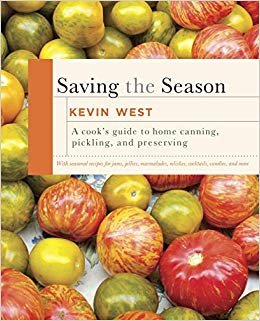
20
SepFall Flavors Sans Pumpkin Spice
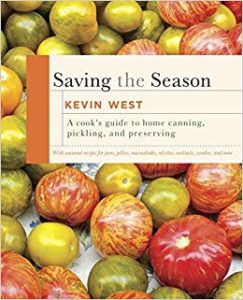 Last fall, I was unpacking the groceries from a trip to the market. My husband popped into the kitchen to “help” put the food away, a.k.a. survey my selections so he can plan what I refer to as his “snack-tivities” for the week.
Last fall, I was unpacking the groceries from a trip to the market. My husband popped into the kitchen to “help” put the food away, a.k.a. survey my selections so he can plan what I refer to as his “snack-tivities” for the week.
After a few minutes of cupboards opening, I heard him exclaim, “Ugh! Why would anyone buy this?!” I turned around, expecting him to be holding one of the weird veggies I buy without knowing what I’ll do with them, but nope, he’s holding a box of pumpkin spice Cheerios. I thought they looked good, but my husband thought I was trying to poison him. This was the moment that I learned that my husband hates almost all pumpkin spice flavored things.
He always ate my squash pie at Thanksgiving dinner, which has the same flavoring as pumpkin spice, so why this sudden hatred for this popular fall flavor? Apparently, the problem is over-exposure. Dunkin’s introduced a pumpkin muffin a few years ago, which I thought was a good fit. New Englanders have been eating spiced pumpkin bread for centuries, so why not make it muffin shaped? But the pumpkin spicing didn’t stop there. Now there are pumpkin spice Oreos, pumpkin spice tea, and pumpkin spice Peeps. Even I draw the line at pumpkin-y marshmallow chicks.
Still, I love warm flavors. Fall and winter are my favorite food seasons and my taste trends toward old fashioned. My favorite meals are the ones served from one giant roasting pan and heat up the whole house in their making. Give me apples, squash that will last months in a root cellar, cozy breads, and warm Indian pudding. Don’t get me wrong, I also enjoy a good avocado and egg sandwich- I am a millennial after all (barely), but if I knew it was my last meal, I would be ordering my grandmother’s Canadian boiled dinner followed by a gigantic slice of squash pie.
My husband is the opposite. He also likes warm flavors, if by warm, you mean HOT. He loves thermonuclear chicken wings, spicy and tangy fish tacos, and self-concocted barbecue sauces that make my eyes water. If I am an autumn/winter eater, he is all about summer flavors. I think that might be why he hates seeing pumpkin spice flavored everything lining the grocery store shelves- it is a signal that summer is over.
For my husband’s sake, I am trying to avoid pumpkin spice overload this autumn and am seeking out fresh fall flavors that won’t induce winter woes, but will still use the ingredients available from our local farms and orchards. Luckily, the library has more than a few books to help me.
The first book I found does less to celebrate the upcoming cooler weather and more to stretch the tastes of summer further. Saving the Season: a Cook’s Guide to Home Canning, Pickling, and Preserving, by Kevin West is a super book for gardeners and farm-share households. I am always scrambling in October to preserve the glut of late season tomatoes and other garden goodies practically falling off the tangle of vines that is my vegetable patch. This book gives options- tasty, tasty options.
The book that I am just loving right now is Dishing Up the Dirt: Simple Recipes for Cooking Through the Seasons, by Andrea Bemis. The author is a passionate farmer and has crafted recipes that take advantage of what her organic farms has on offer each season. She experiments with flavors in recipes like her beet, walnut and kale pizza or winter squash carbonara, but still includes new twists on classic recipes, like tomato sauce to use up the last of the season’s tomatoes, and sweet potato pie.
Another book that made my mouth water is America Farm to Table, by Mario Batali. Batali also takes on using local, seasonal ingredients to make yummy dishes that will please a crowd. He looks to towns and cities across the country for inspiration. I found that the recipes inspired by Vail, Colorado fit well with what my garden is producing and what is available at nearby farmers markets. The beef and chard meatballs were lick-the-plate-clean good.
Even with summer quickly fading away, I am hoping to ease the transition into fall for my anti-pumpkin spice husband with a few recipes from these great titles. Maybe I can even save a few recipes to take the sting out of that first snowfall.
Alli Palmgren is the Technology Librarian at the Morrill Memorial Library in Norwood, Massachusetts. Read Alli’s column in the September 20, 2018 issue of the Norwood Transcript and Bulletin.
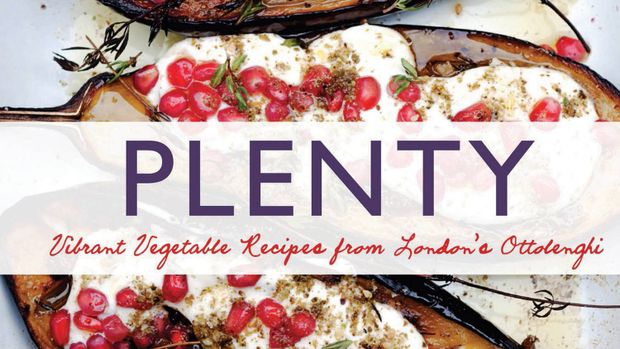
30
AugCook the Book: Falling Back in Love with Cookbooks
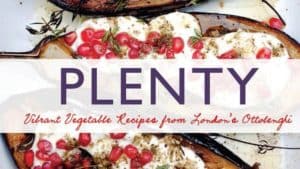 Once upon a time, I was an organized home cook. I planned our weekly menus for our meals at home, shopped for only fresh ingredients weekly, and did all my prep work in the mornings before work. Then I had a baby and all of my careful, well-honed organization went out the window. Gone were the days when I had time to flip through my cookbooks at a leisurely pace. I tried to make meal plans but then a baby wouldn’t stop crying and something would burn or a toddler interrupted me a thousand times before I could dice a shallot. Food shopping became a marathon exercise of half-remembered lists and saying “No, put that down; we don’t need that!”
Once upon a time, I was an organized home cook. I planned our weekly menus for our meals at home, shopped for only fresh ingredients weekly, and did all my prep work in the mornings before work. Then I had a baby and all of my careful, well-honed organization went out the window. Gone were the days when I had time to flip through my cookbooks at a leisurely pace. I tried to make meal plans but then a baby wouldn’t stop crying and something would burn or a toddler interrupted me a thousand times before I could dice a shallot. Food shopping became a marathon exercise of half-remembered lists and saying “No, put that down; we don’t need that!”
Like every aspect of motherhood, there was a learning curve. Feeding my family was essential but I had to figure out how I could get back to my love of cooking instead of just throwing something (rather unhealthy) together while feeling exhausted and underappreciated. One simple change has made a difference: time has passed. I no longer have a baby or a toddler but a nearly self sufficient elementary school aged child who loves to cook herself. My husband arrives home on the later side, so I feed my daughter earlier in the evening and he and I eat after bedtime, leaving me a little time to put something decent together.
I’ve tried several strategies. My first attempt to reawaken the love of cooking was signing up for Blue Apron, a delivery service that provided meal kits to be prepared at home. The recipes looked delicious and the ingredients were extremely fresh but I soon experienced a few downfalls. First of all, I couldn’t choose what meals would arrive in a given week. Some people like that type of variety, but I suppose I’m more of a creature of habit than I realized. I like to look forward to things, even meals. Secondly, many of the recipes had steps I deemed unnecessary. I remember angrily shelling edamame and thinking, “But I could have bought shelled edamame to begin with and saved time!” I have a decent amount of experience in the kitchen, and I automatically scan recipes to see how I can streamline steps to maximize my time. One of my key time savers is buying produce already prepared and ready to use.
Blue Apron didn’t last long and I had already set my sights on switching to Plated, another meal kit delivery service that allowed us to pick from thirteen recipes each week. I solved my first problem by giving myself more control over what we received each week. I also found that Plated recipes required less fuss with ingredient preparation. We had a few issues with the actual delivery that led us to cancel the service so I was back at square one with meal planning.
Now that my daughter is a little older, I’m feeling the tug towards my long-neglected cookbook collection. Since discovering a new delivery service through Amazon called Prime Now, I’m starting to entertain the idea of going back to traditional meal planning with an updated food shopping service. Simply create a shopping list on your Prime Now app and someone will shop FOR you at Whole Foods and then deliver the grocery order to your house. No more wrangling a cranky child and an unwieldy shopping cart. That freedom has helped me rediscover some of my old favorite recipes from the dusty cookbooks on my shelves.
Plenty by Yotam Ottolenghi was my first foray into non-traditional vegetarian cooking. Ottolenghi is a well-regarded British chef, restaurateur, and column writer for The Guardian. His philosophy about cooking vegetables made complete sense to me after I read an interview where he described the importance of recipes highlighting the flavor and properties of a vegetable, not trying to sell it as a meat substitute. Plenty takes this approach and does not pretend to try and turn hardcore meat eaters to veganism. It’s simply a great cookbook if you want interesting vegetable dishes that shine. My personal favorite recipes include Very Full Tart, Smoky Frittata, and Caramelized Fennel with Goat Cheese. My one recommendation with this cookbook is to watch cooking temperatures and time. I suspect Ottolenghi used his commercial grade kitchen when perfecting his recipes rather than a residential one and often food takes longer than he says it should.
On the opposite end of the cooking spectrum is Ina Garten, who probably needs no introduction. In case you have been living under a rock, Ina is a world famous Food Network host, chef, and former owner of the Barefoot Contessa shop in the Hamptons of Long Island. While some find her New York charm and insistence on “good” ingredients a little grating, I love that Ina never compromises on what’s important to her. The Barefoot Contessa: Back to Basics is filled with simple, tasty recipes and easy instructions. Ina is a home cook, so all of her recipes are usually very accurate and easy to make. Favorites like her Chicken Bouillabaisse take me back to a time before motherhood when I could spend several hours cooking every night and still remains my “date night in” specialty.
Now that fall is on the horizon, I find myself flipping through Molly Stevens’ classic Roasting. The oven is my secret weapon for mom-friendly recipes. I can quickly marinate or season a piece of meat with pre-chopped veggies while it preheats, and then walk away while everything roasts for 40 minutes. The house fills up with a delicious scent and I really feel as if I’ve made a good effort in the kitchen. Roasting is a master class in this, and Stevens’ chatty and detailed chapter introductions really help you master a technique rather than just one dish. When the cooler weather arrives, I love the comfort food appeal of Roasted Chicken Pieces Dijonnaise.
These three are only a few of my treasured collection! I’ve downsized a bit after several moves and have really only kept the cookbooks that contain recipes and techniques I truly love and use. I’m always on the hunt for new, tasty looking and well-written recipes, and frequently rifle through the library’s new nonfiction to see the latest cookbooks. I also love to wander in the library’s infamous “cookbook aisle” in the 600s on the mezzanine level. We have an unbelievable collection that could pull any home cook out of a slump.
Kate Tigue is the Head of Youth Services at the Morrill Memorial Library in Norwood, MA. Read Kate’s column in the August 30, 2018 edition of the Norwood Transcript and Bulletin.
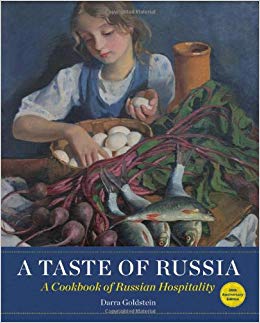
23
AugBinging on Great British Baking and Russian Pastry
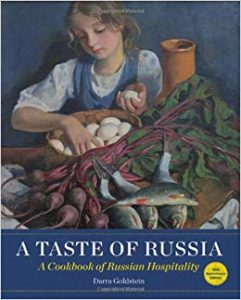 Gerry and I binge-watched at least four seasons of the Great British Baking Show this summer. It had been recommended and once I started binging and proselytizing about my new-found crush, I realized that, as with most other hit series, I was years late to the party. Especially this British one.
Gerry and I binge-watched at least four seasons of the Great British Baking Show this summer. It had been recommended and once I started binging and proselytizing about my new-found crush, I realized that, as with most other hit series, I was years late to the party. Especially this British one.
During one particular B-A-A-A-A-K-E which happened to be pastries, I thought of the favorite savory pastry that had captured my fancy over 25 years ago. It was the kulebiaka (or coulibiac) – a time-consuming Russian first course. The kulebiaka boasts a flaky, buttery pastry that envelopes a filling of either cabbage and chopped hardboiled eggs or salmon, rice and dill. My finished kulebiaka’s crust is garnished with leaves and a rope closure and rises and bakes to golden perfection.
Once sliced and served with sour cream, it is always met with ooohs and aaaahs across the room. Anton Chekhov wrote in his short story The Siren that “the kulebiaka must make your mouth water; it must lie there before you, a shameless temptation! You cut off a sizable slice and let your fingers play over it. When you bite into it, the butter drips from it like tears.”
I fantasized, recently of course, that Paul Hollywood would have swooned over one of my masterpieces, the kulebiaka. I might have had a handshake.
Long before I was awarded my master’s degree in library science (or MLS) from Boston’s Simmons College, I had returned to college in the late 1980s as an undergraduate. Years earlier I had left behind three years of academic work in History and Political Science at a California university to begin raising my family. A requirement for completing my degree with distinction from a Massachusetts state college was that I must complete more than half of the total required credits (120) at a Massachusetts school. Doing the easy math, I need to complete 150 total credits instead of the normal 120 for a bachelor’s degree. Lucky for me, I had more curiosity than 120 credits anyway.
My favorite courses that second time around were in Russian Studies, which of course fell right smack within my favorite academic areas of interest: history, literature and political science. For a minor in Russian Studies I was also required to take at least a year of Russian language and I memorized the Cyrillic alphabet forwards and backwards. My studies included a tour to the Soviet Union in 1990, a year before my hero USSR President Mikhail Gorbachev’s policies of glasnost and perestroika helped to dismantle the Soviet Union and communism.
My interest in Russia started many years before… as a very young child. Moving to Berkeley, California at the age of six, my family rented an apartment in a big house just three houses from my new elementary school. Our absent landlady was a large, hardy and hearty block of a Russian woman who was missing most of her right arm. Her infrequent visits, her Russian accent, and her exotic right arm fascinated me. That curiosity led me to other things Russian in my youth, including a book I read my senior year in high school, We the Living by Ayn Rand. It is one I credit with many influences in my life. The young, female protagonist in the book is named Kira. It was years later, after naming my youngest daughter with the Irish version of that name (Ciara and pronounced exactly the same), when I realized just how influential the book had been.
Returning from the study tour in the Soviet Union in 1990, I took up Russian cooking with an energetic passion. My graduation party from college in 1991 was a huge affair with over a hundred friends and family feasting on Russian food and drink. I enlisted the help of some of those friends who cooked and baked with me all week. I rented tables for the backyard and placed centerpieces of pitchers of lilacs, all donated from another friend’s garden. I hired a young Russian man named Sasha who appeared dressed in traditional Slavic costume. He spent the afternoon roaming the yard with his balalaika and entertaining the crowd with lovely Russian folk music. In addition, I contracted a slick-suited pianist named Vladimir who played music by Russian composers on the piano in my living room. It was a tremendously wonderful party and I smile again remembering it nearly three decades later.
So, following that pastry episode on the GBBS, I searched for my recipe books and came across some of my old favorites on my bookshelves, A La Russe: A Cookbook of Russian Hospitality by Darra Goldstein and the Art of Russian Cuisine by Anne Volokh. The copy of my favorite book, Russian Cooking, part of the Time-Life Cooking of the World Series I had collected in the 70s as a young wife, was missing. That book was the one from which I’d learned exactly how to assemble the kulebiaka, using the photographs over a two-page spread. To my surprise, not one of the Minuteman Libraries had a copy. Thankfully, I found over a dozen copies of Russian Cooking listed in the Massachusetts’ Commonwealth Catalog (or ComCat.) Although I could have requested one through Massachusetts library delivery, I eventually unearthed my own copy. I discovered the very worn and stained spiral-bound book of recipes and the accompanying hardcover in my basement, mixed in with a few other castaways.
Searching the library catalog, I found a more recent copy of Darra Goldstein’s book (published in 2013 as A Taste of Russia and I’ve added to our collection.) Her book is rich with recipes for Marinated Mushrooms, Baked Apple Charlotte, Baba au Rhum, and Siberian Dumplings. The recipe for Apricot Tart is one I memorized 25 years ago and use over and over again. Anne Volikh’s Art of Russian Cuisine is no longer in print, but several libraries have it on their shelves. She also includes a page of drawings illustrating assembly of the Kulebiaka and recipes from across the huge Russian and Soviet empires. Our library has a copy of Please to the Table by Anya von Kremen that includes recipes across the fifteen former republics of the Soviet Union.
If you’d like to learn the art and passion of Russian cooking, like the famed kulebiaka, there are many books in the Minuteman Library Network and across Massachusetts through ComCat. Or watch every episode of the Great British Baking Show and save those calories.
Charlotte Canelli is the Director of the Morrill Memorial Library in Norwood, Massachusetts. Read Charlotte’s column in the August 23, 2018 edition of the Norwood Transcript and Bulletin.
